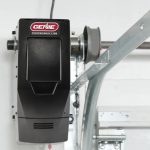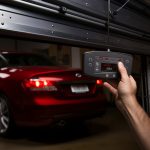A replacement garage door opener is a vital component in ensuring the smooth operation of your garage door. Whether your current opener has malfunctioned, become outdated, or you’re simply looking to upgrade, selecting the right replacement can enhance the security, convenience, and efficiency of your home. This extensive guide will walk you through everything you need to know about replacement garage door openers, including types, features to consider, installation tips, and maintenance practices. By the end, you’ll be equipped with the knowledge to make an informed decision that best suits your needs.
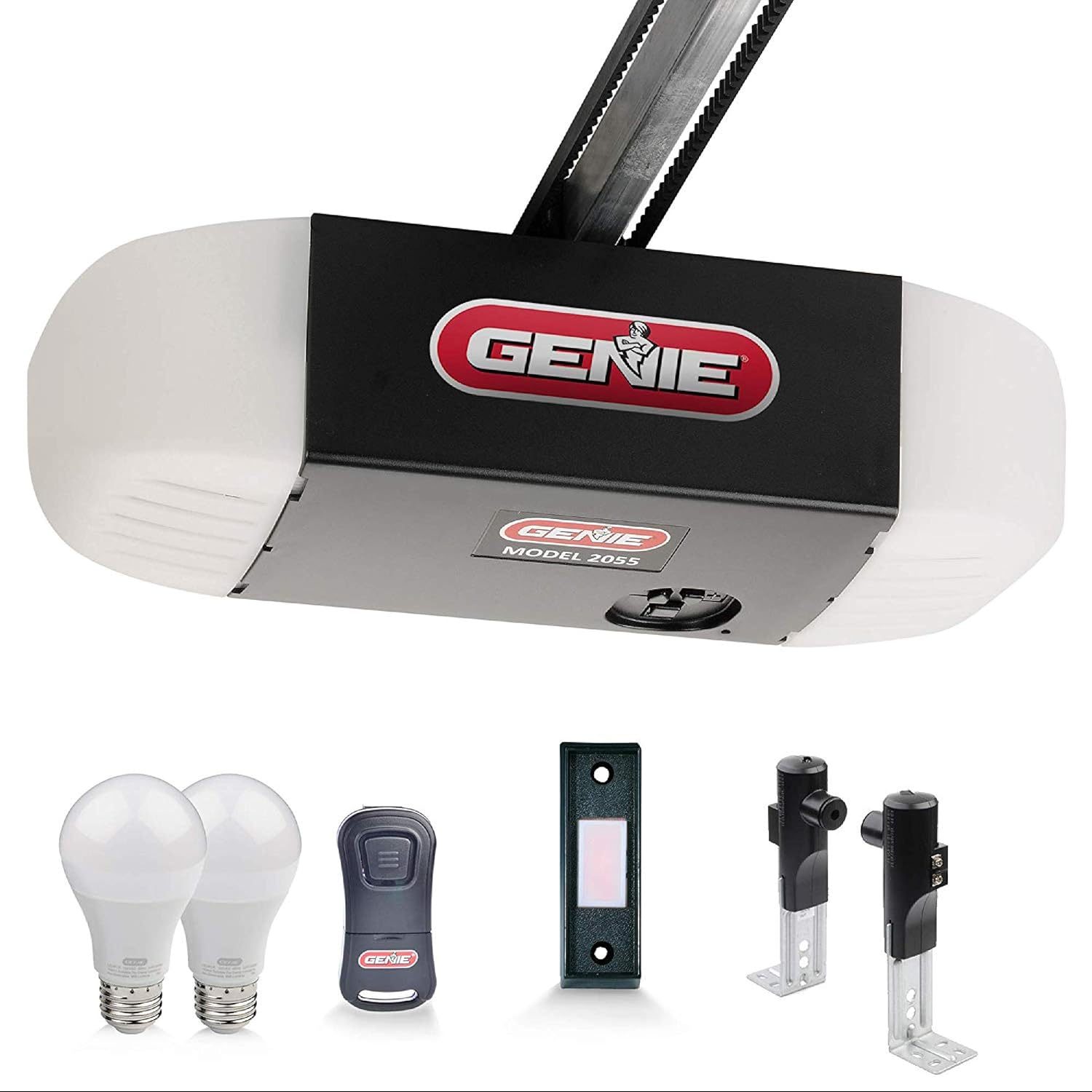 Signs Your Garage Door Opener Needs Replacement
Signs Your Garage Door Opener Needs Replacement
Your garage door opener is a crucial part of your home. It ensures smooth operation and security. Knowing when to replace it can save you from inconvenience.
Common malfunctions that indicate replacement is necessary
- Frequent Stalling or Jerking: If your garage door stalls or jerks while opening, the opener may be failing.
- Unusual Noises: Grinding, rattling, or squeaking sounds can mean internal components are wearing out.
- Remote or Sensor Issues: If remotes and sensors don’t work consistently, your opener may need replacement.
- Inconsistent Opening and Closing: A door that opens halfway or reverses unexpectedly signals opener problems.
- Overheating Motor: If the motor overheats often, it could mean it’s nearing the end of its lifespan.
Address these issues quickly, as delays can lead to more significant damage.
How to determine the age and efficiency of your garage door opener
Checking the age and efficiency of your garage door opener helps decide its replacement.
- Age of the Opener: Most garage door openers last about 10–15 years. If yours is older, consider replacing it.
- Efficiency Level: A slow or inconsistent opener wastes time and energy. Assess its performance regularly.
- Technology Standards: Older models may lack modern features like smart connectivity or energy efficiency. Upgrading could enhance convenience.
- Visible Wear and Tear: Check for rust, frayed wires, or worn gears, which reduce efficiency.
Use these guidelines to evaluate your opener’s condition and decide whether replacement is necessary.
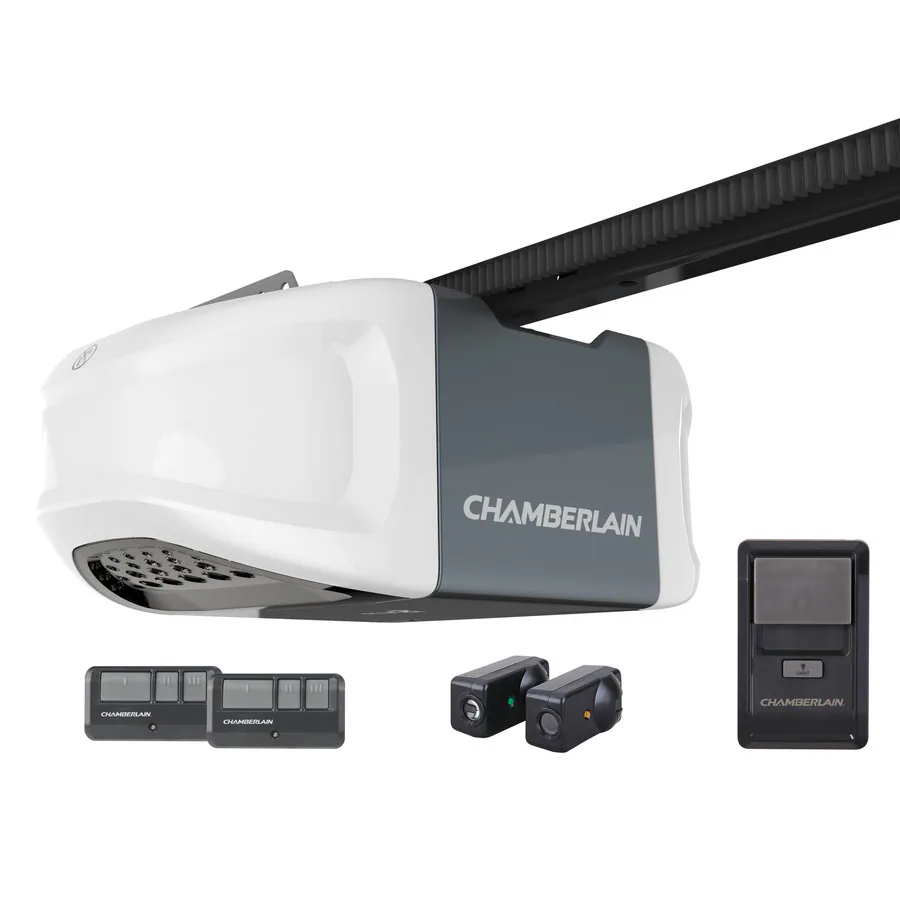 Types of Garage Door Openers
Types of Garage Door Openers
Choosing the right garage door opener depends on your needs and priorities. Various types offer unique advantages and drawbacks.
Chain-drive, belt-drive, and screw-drive door openers
- Chain-Drive Openers: These are economical and robust, ideal for heavier garage doors. They use a metal chain to lift the door. However, they are louder compared to other types, making them less ideal for garages near living spaces.
- Belt-Drive Openers: A belt-drive opener uses a rubber belt for smooth operation. It’s quieter than the chain-drive and suitable for homes needing less noise. They are slightly more expensive but offer reliable performance for both light and heavy doors.
- Screw-Drive Openers: These use a threaded steel rod to move the garage door. The design makes them less noisy and low-maintenance. They are best for moderate climates, as extreme temperatures can impact performance. Screw-drive openers work well for lightweight doors.
Differences in performance and noise levels
- Performance: Chain-drive openers handle heavy doors better but require regular maintenance. Belt-drive models work smoothly, making them perfect for frequent use. Screw-drive openers manage smaller doors efficiently but may become less reliable in drastic weather.
- Noise Levels: Belt-drive openers are the quietest, suitable for homes with adjacent bedrooms. Chain-drive models are louder, but their affordable prices make them popular. Screw-drive openers offer moderate noise levels, ideal for detached garages.
Understand your garage door type and usage needs before selecting an opener. Ensure that your choice enhances convenience and fits your budget.
Factors to Consider When Choosing a Replacement
Selecting the right garage door opener involves evaluating key factors for your specific needs.
Motor power and capacity
- Motor Size: Choose a motor that suits the weight and size of your garage door. Heavier doors need stronger motors, like ? HP models, while lighter doors can work with ? HP motors.
- Capacity for Usage: Consider how often you use your garage door. Frequent use demands a durable, high-capacity motor to prevent wear.
- Type of Drive System: Match the motor power to the drive system you’ll select, ensuring efficient operation.
- Durability Standards: Opt for motors tested for reliability under repeated use, ensuring long-lasting performance.
Smart features and connectivity options
- Smart Connectivity: Modern garage door openers offer Wi-Fi and app control features for added convenience. Remote access lets you operate the door using your smartphone.
- Home Automation Integration: Some openers can integrate with smart home systems like Alexa or Google Assistant.
- Safety Alerts: Look for openers with real-time alerts, notifying you of changes or malfunctions in the system.
- Backup Features: Battery backups ensure functionality during power outages, keeping your door operational at all times.
Energy efficiency and durability
- Energy-Saving Models: Consider openers with energy-efficient mechanisms to lower electricity costs. Models with sleep mode can further reduce power usage.
- Durable Components: Select openers made from quality materials, such as reinforced steel or weather-resistant gearboxes, to withstand wear and tear.
- Warranty and Support: Check for extended warranties indicating the manufacturer’s confidence in durability.
- Sustainability Features: Opt for eco-friendly models designed for long-term efficiency and minimal environment impact.
Carefully assess these factors to ensure your garage door opener meets your performance and budget requirements.
Step-by-Step Replacement Process
Replacing a garage door opener involves following a safe and organized plan. Proper preparation ensures smooth installation and functionality.
Pre-installation checklist
- Read the Manual: Understand the installation instructions provided by the manufacturer.
- Gather Tools: Collect tools like a wrench, screwdriver, ladder, and safety glasses.
- Check Power Supply: Ensure your garage has a functional power outlet near the opener.
- Inspect Garage Door: Confirm the door operates smoothly without the opener.
- Purchase the Right Opener: Match the drive system and motor to your garage door type.
- Clear the Workspace: Remove clutter around the garage door for easy access.
- Safety Precautions: Disconnect electricity to prevent accidents during installation.
How to uninstall the old garage door opener
- Turn Off Power Supply: Unplug the opener from the power outlet.
- Disengage Emergency Release Cord: Pull the cord to disconnect the opener from the door.
- Remove Mounting Brackets: Carefully unscrew the opener’s mounting hardware.
- Detach Motor Unit and Rail: Lower the motor and rail slowly to avoid damage.
- Dispose Responsibly: Recycle old parts or follow local disposal guidelines.
Installing the new unit safely
- Attach Rail to Motor Unit: Secure the rail to the motor as instructed in the manual.
- Connect Trolley and Belt/Chain: Align the trolley with the rail and attach the drive system.
- Fix Mounting Brackets: Install the brackets securely on the ceiling or wall.
- Position the Opener: Mount the opener in line with the garage door center.
- Install Safety Sensors: Place sensors near the bottom of the door tracks for safety.
- Wire and Test Components: Connect wires for the sensors and wall control, then test the system.
- Attach Emergency Release Cord: Ensure the cord is accessible and functional.
Following these steps ensures a safe and successful replacement. Take your time to avoid costly errors.
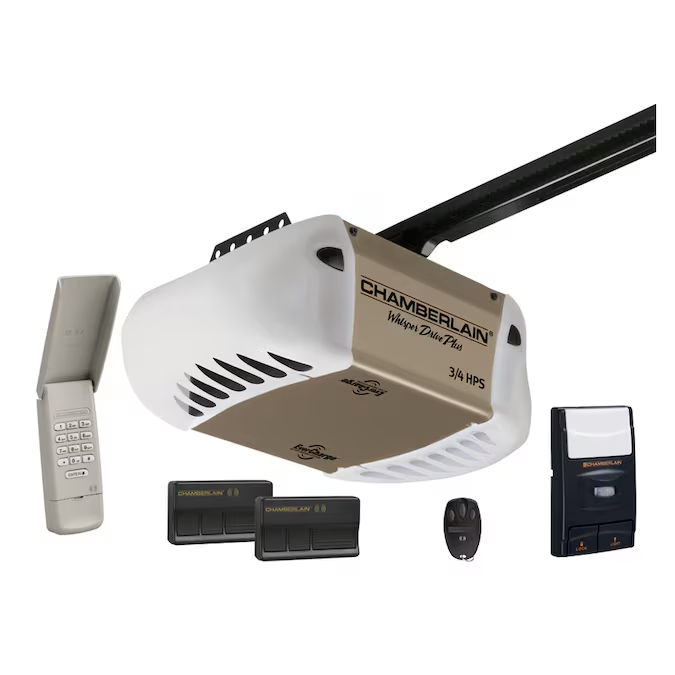 Maintenance Tips for Your New Garage Door Opener
Maintenance Tips for Your New Garage Door Opener
Proper maintenance extends the life and performance of your replacement garage door opener. Following a routine keeps it efficient and reliable over time.
Regular lubrication and cleaning
- Lubricate Moving Parts: Apply garage door lubricant to chains, belts, screws, and rollers every six months.
- Clean Rails and Tracks: Remove dust and debris from tracks and rails using a soft cloth.
- Inspect Opener Housing: Wipe the motor housing and ensure vents are clear for proper airflow.
- Test Door Balance: An unbalanced garage door strains the opener. Test balance and adjust as needed.
- Use Non-Corrosive Products: Avoid harsh chemicals while cleaning to prevent damage to components.
- Check Weather Seals: Clean and inspect seals to ensure no debris hinders smooth operation.
Routine lubrication and cleaning prevent wear and ensure smooth operation.
Monitoring components like sensors and remotes
- Test Sensor Alignment: Inspect safety sensors monthly and ensure they align properly.
- Clean Sensor Lenses: Wipe sensor lenses with a soft cloth to remove dirt affecting functionality.
- Check Remote Batteries: Replace batteries in remotes every 6–12 months for consistent performance.
- Inspect Wall Controls: Ensure wall-mounted controls respond correctly to usage.
- Monitor Connections: Verify that all wiring, sensors, and remotes connect securely to the unit.
- Test Backup Systems: Regularly ensure that the battery backup operates during power outages.
By attending to these components, you ensure safe and reliable garage door operation over time.
Common Errors to Avoid During Installation
Avoiding errors during garage door opener replacement ensures proper functionality and prevents costly repairs.
Improper alignment and configuration
- Misaligned Sensors: Ensure safety sensors are aligned to avoid operational issues and safety problems.
- Wrong Rail Placement: Position the rail correctly to prevent poor door movement or stress on the motor.
- Uneven Mounting Brackets: Attach brackets securely and evenly to stabilize the opener during operation.
- Incorrect Trolley Setup: Properly align the trolley for smooth door movement and reduced strain on components.
- Skipping Manufacturer’s Instructions: Follow the manual precisely for correct setup and consistent performance.
Proper alignment and configuration protect your opener from unnecessary wear and ensure efficiency.
Incorrect wiring or power issues
- Loose Wire Connections: Secure all wiring to prevent operational failures or short circuits.
- Crossed Wires: Match wire colors accurately to avoid damage and electrical hazards.
- Lack of Grounding: Ground the opener to ensure safety against electrical faults.
- Undersized Power Outlet: Use a dedicated outlet with the correct capacity for the opener.
- Inconsistent Power Supply: Test the outlet and connections to maintain steady power.
Correct wiring and power setup guarantee reliable operation and improve the longevity of your opener.
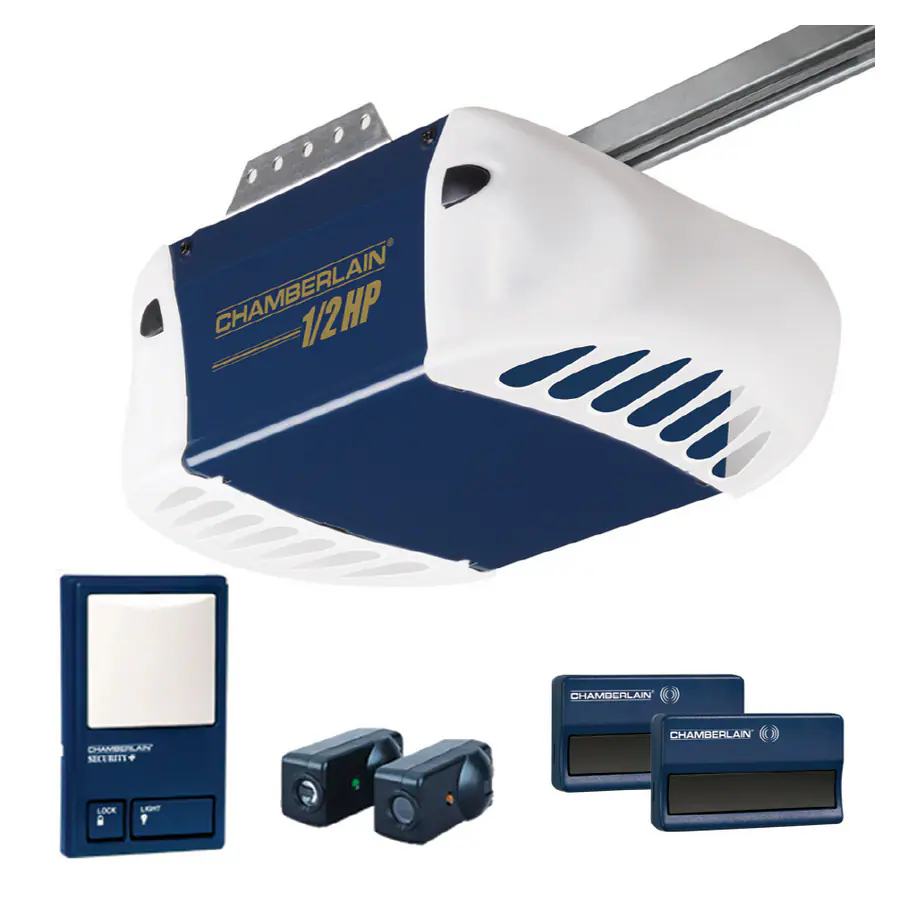 Cost of Replacing a Garage Door Opener
Cost of Replacing a Garage Door Opener
Understanding the costs involved in replacing a garage door opener ensures you plan your budget well.
Average replacement costs
- Equipment Costs: A standard garage door opener costs between $150 and $300. Models with advanced features like smart connectivity and higher motor capacities can range from $300 to $500.
- Labor Costs: Professional installation typically costs an additional $150 to $200, depending on your location and the complexity of the installation.
- Additional Components: You might need extra hardware, such as mounting brackets or safety sensors. These components can add $20 to $50 to the total cost.
- Old Opener Disposal: Some services charge $20 to $50 for recycling or disposing of the old unit.
- Warranty Consideration: Opting for openers with extended warranties may slightly raise the upfront cost but ensure long-term reliability.
Average replacement costs vary based on the model and service chosen. Replacement garage door opener costs are versatile and customizable to fit different needs.
Professional installation vs DIY options
- Benefits of Professional Installation: Skilled technicians ensure the opener is installed correctly. They align sensors, configure wiring, and test performance, reducing risk of errors.
- Costs of DIY Installation: DIY can save labor fees, but you’ll need proper tools and a basic understanding of installation procedures.
- Complexity of DIY Projects: Tasks like ensuring sensor alignment and wiring configuration require precision. Mistakes can lead to expensive repairs.
- Time Commitment: Professionals complete installations efficiently, while DIY may take longer and require troubleshooting.
- Warranty Terms: Professional installations often align with warranty requirements, whereas DIY setups may void warranties.
Carefully weigh professional services against DIY efforts when installing a replacement garage door opener. Efficient decision-making ensures cost-effectiveness and reliability.
Common Questions About Replacement Garage Door Openers
Addressing frequently asked questions can help clarify any uncertainties you might have about replacement garage door openers, ensuring you make an informed decision.
How Long Does a Replacement Garage Door Opener Last?
Generally, a well-maintained garage door opener can last between 10 to 15 years. However, this duration can vary based on factors such as usage frequency, maintenance practices, and environmental conditions.
Can I Replace My Garage Door Opener Myself?
Yes, replacing your garage door opener can be a DIY project if you have the necessary tools and follow the manufacturer’s instructions carefully. However, if you’re not comfortable with electrical work or mechanical installations, seeking professional assistance is advisable to ensure safe and proper setup.
What Should I Do If My Replacement Garage Door Opener Isn’t Working?
If your new opener isn’t functioning correctly, first verify that it is properly installed and connected. Check for any loose wires, ensure the safety sensors are aligned, and consult the troubleshooting guide provided by the manufacturer. If problems persist, contacting customer support or a professional technician is recommended.
Are Replacement Garage Door Openers Compatible with All Garage Doors?
Most replacement garage door openers are compatible with standard garage doors, but it’s crucial to verify compatibility with your specific door type and weight. Check the manufacturer’s specifications and instructions to ensure a proper fit and optimal performance.
How Do I Choose the Best Replacement Garage Door Opener for My Home?
Selecting the best replacement garage door opener involves assessing your garage door type, considering desired features and functionalities, evaluating budget constraints, and reading customer reviews. By considering these factors, you can choose an opener that meets your needs and enhances your home’s convenience and security.
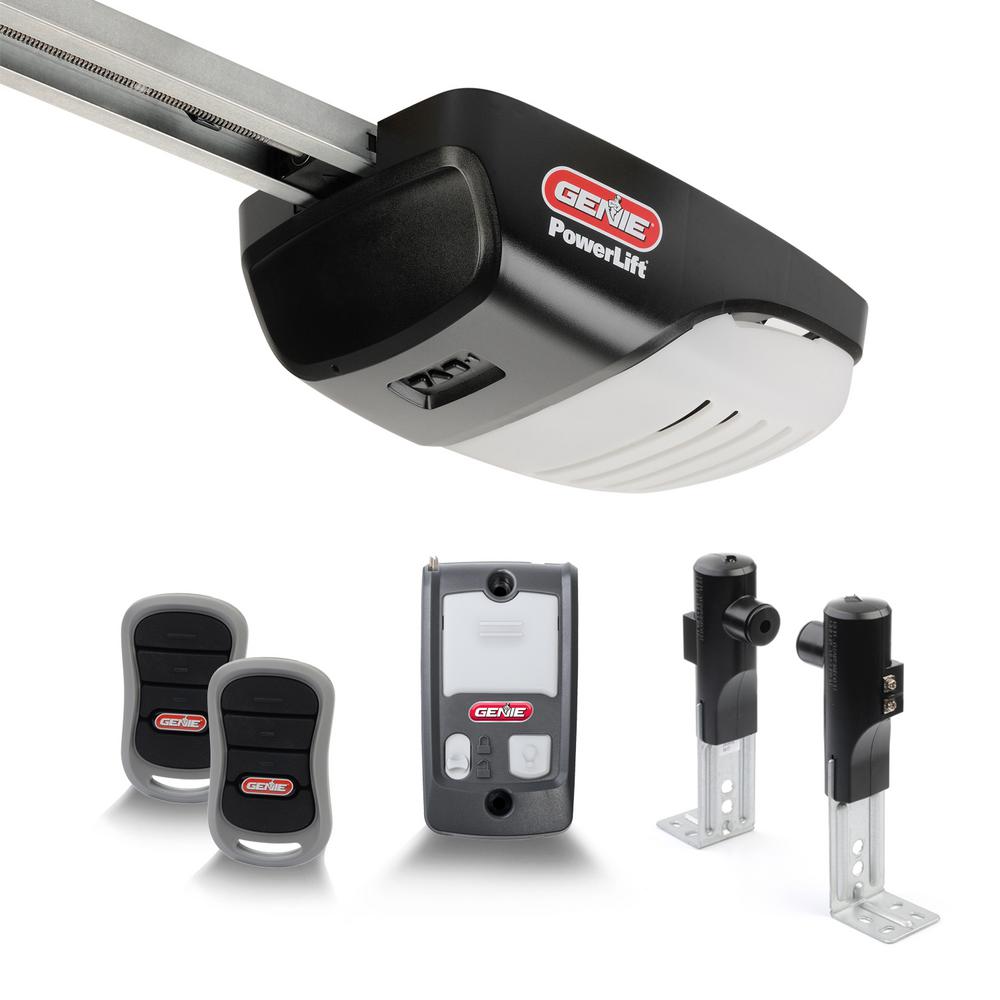 Conclusion
Conclusion
Choosing the right replacement garage door opener is essential for ensuring the smooth, secure, and efficient operation of your garage door. By understanding the various types, key features, installation tips, and maintenance practices, you can make an informed decision that enhances the functionality and longevity of your opener. Whether you opt for a basic model or upgrade to a smart, feature-rich system, a replacement garage door opener can significantly improve your home’s convenience and security. Embrace the benefits of a new opener and enjoy the ease and reliability it brings to your daily routines. With the right knowledge and tools, how to take off gel nail polish at home becomes a breeze, ensuring your garage door operates perfectly for years to come.
